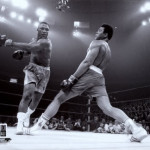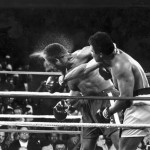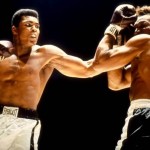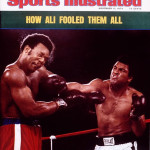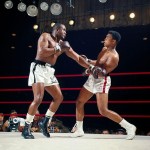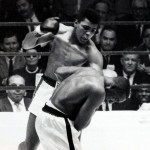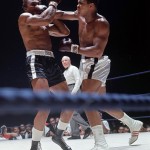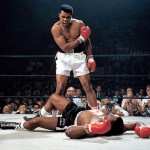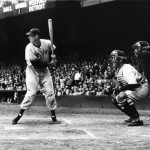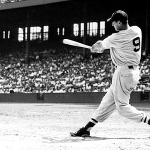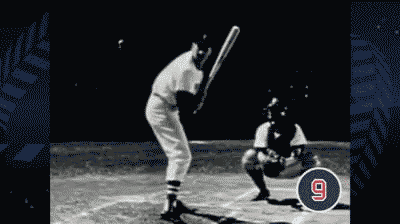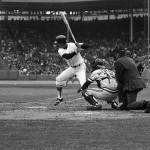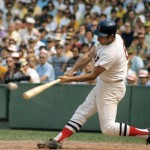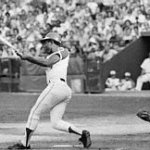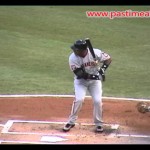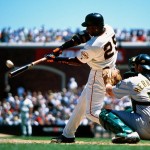Power and Efficiency from Perfect TIMING
“Perfect-timing” is a matter of combining momentum with vibrational-alignment in space to “focus” precisely with place and time! In all of Professional sports, especially of the individual variety like tennis, golf, swimming, boxing, bowling, skiing, skate-boarding, etc., the sportsman fine-tunes his craft to such a degree that most casual observers do not recognize the exact mechanism by which “perfect-timing” for each specific movement is accomplished. In this year’s U.S. Open in Tennis (2014), even the most unrefined spectator could notice that Roger Federer’s timing was anything but perfect for his first two sets against France’s Gael Monfils. Even the commentators were implying that Monfils was controlling the Match with almost flawless precision while Federer was mishitting most of his usually masterful strokes, and headed for a dismal defeat. What was it that redefined the match in the 3rd, 4th, and 5th sets to enable Federer to regain his precision-timing, and for the most part Monfils’ to lose control, and lead to Roger’s “thrilling” victory, and Gael’s agonizing defeat?
Perfect-timing begins with the mind of the Elite Athlete. The understanding of what needs to be done, and the determination and intent to allow his body to follow-through with Confidence is almost always the most contributing factor for superlative and “timely” performance.
Nothing depicts “perfect-timing” in sports better than a slow-motion sequence of movements by a boxer as he delivers a devastating “knock-out” blow to the chin of his opponent after countering his adversary’s “right or left-hook” and immediately applying a quick and precise “right-cross” of his own. And no one was better at “counter-punching” than Mohammed Ali (formerly Cassius Clay). Not known primarily as a power-puncher, he still managed to knock out most of his opponents with his quick and precise application of focused intent at an instant soon after his attacker tried to apply a strike, or after he himself had delivered a feint jab.
It’s hard for a “normal” person, whose reflexes cannot be compared to the quickness of Ali’s, to recognize the incredible “timing mechanism” that is involved within such a nanosecond of time. Even ring-side announcers often attribute such imposing characteristics of a “rapid-fire” boxer as that of having “fast-hands.” All they seem to be able to see is the glove-in-hand as it strikes the unfortunate face of a recipient of “focused intent.” Most casual observers hardly notice that the speed and power of the punch does not emanate merely from the pounding fists.
Anyone watching a boxer, or even an actor portraying a fighter, shadow-boxing to the lens of a camera, is usually fascinated by the quickness of his movements as he sets forth a series of rapid fire punches from various angles depicting a flurry of potential blows that would strike an opponent. But anyone, with a little training, could replicate that scene and feel the confidence of that surreal experience, just enough to get his “ass-kicked” if he took the temptation too far. Sylvester Stallone’s fictional “Rocky Balboa” looks pretty good as he shadow-boxes atop the steps of a Philadelphia landmark, but his counter-punching prowess will always be limited to the “Silver-screen.” It’s not how quick or fast you seem to be; it’s how quick you are to respond in the proper fashion to a given stimulus, at the correct and precise time.
Power-punching in boxing and “Power-swinging” in Baseball mean nothing if the focus of precise timing is not in alignment with purest intent. As powerful as Sonny Liston was when he encountered Cassius Clay, he couldn’t hit Clay if he cornered him in a telephone booth. Cassius’s quick reflexes and counter-punching ability left Liston waving at the air as he was being pummeled to the canvas by flurries of furious fists, the tidal-wave of which emanated from his fast footwork, and powerful torquing action of hips and torso.
A Professional baseball player with even a cursory understanding of “Batting Technique” can simulate what would be considered “the perfect swing” while he is “shadow-swinging” in the on-deck circle. But when he gets into that “rarefied cubicle of variable distinction” his purpose now transforms from a single-dimensional component to the challenging variables of myriad proportions. For a batter the quintessential question is, “how do I put my perfect swing into play at precisely the “right time” as the pitcher is doing everything he can to off-set my “perfect-timing”? A batter who guesses “fast-ball.” and receives a “fast-ball” has a perfect opportunity to produce his “perfect swing,” and perhaps launch a prodigious blast. But, of course, his figuratively “perfect swing” does not mean that he will make “perfect-contact” with the ball, but at least he was afforded the opportunity for optimal expression of maximum muscular function while simply “fouling” the pitch back. The “timing” was there, but something in the “technique” was lacking.
A boxer who discerns his chance for a “counter-punch” to obliterate his opponent, and then fails to apply that finishing touch because of something lacking in his technique, will certainly regret not taking advantage of his rare opportunity. (Monfils had distinct opportunities in the 4th set to “finish-off” Federer with either of two “match-points,” but failed to facilitate the bodily rhythm and precision timing to coordinate the proficiency to put Roger away – he lacked stamina and will – Focus!)
The Major-League pitcher in the previous scenario will recognize his good fortune, and certainly not repeat a pitch without altering its location or the velocity. To which, the batter will almost certainly fail to replicate his “perfect-timing” and be caught off-balance and perhaps “punched out.”
Within the context of its everyday regimen, Baseball is first a one-on-one confrontation (Batter vs. Pitcher) like Boxing (normally without pugilistic intent and public vilification).
Perfect timing without proper technique may afford a preliminary sense of efficiency by consistently contacting the ball, but without ostensible power. And, proper technique, without an ability to effect the perfect timing, might make a good first- impression to casual onlookers, but without good-timing, that beautiful swing will go for naught.
Coming Soon: Part 2
